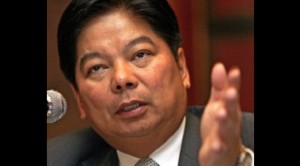Measures seen in place to pop realty bubble
MANILA, Philippines–Moves to constrict cash to avoid excesses in the economy may be enough to pop the beginnings of what might be a price bubble in the country’s growing property sector, according to regulators.
Bangko Sentral ng Pilipinas (BSP) Governor Amando M. Tetangco Jr. said banks should take heed of recent policy decisions and adjust their lending practices to cut out unnecessary risks.
This comes as property prices in the country’s five main business districts rose to their highest levels since the 1997 Asian financial crisis, with demand fueled by low interest rates and the nation’s surging economy.
“I think the new measures have provided the market with clear enough guidance to help them better appreciate the risks of their lending activities,” Tetangco said in an e-mail last Saturday.
Last July, the BSP introduced new stress tests for local banks to see whether their finances could absorb real estate writedowns of up to 25 percent, simulating the level of defaults that led to the 1997 credit crunch.
In October, the BSP also announced a new credit risk management framework to guide banks. Among others, the new set of rules cap the value of real estate that can be used as collateral at 60 percent. Banks were told to focus on borrowers’ ability to pay, not the value of their assets that can be foreclosed in case of a default.
These measures go on top of more sweeping adjustments in monetary policy settings to rein in excessive lending and liquidity growth.
In April and May, banks were told to set aside more of their clients’ deposits as reserves. Special deposit account (SDA) yields and the BSP’s own borrowing rate have also been raised from record lows, with the aim of raising the cost of money for banks.
“These should help cool any brewing pressures,” Tetangco said.
Moody’s Investor Service in a report last week noted that real estate loans in the Philippines have grown 19 percent a year since 2009. This was well above the 12-percent growth of overall banking system loans.
Property prices in the Philippines have also risen in tandem with gross domestic product (GDP), increasing by about 35 percent since 2009.
Data from Colliers International, a consultancy firm, indicated that implied land values in the Makati and Ortigas central business districts appreciated at the end of June over quarter- and year-ago levels to near 1997 levels. In real terms, which accounts for inflation, property prices were still far off from their peaks prior to the Asian crisis.
Land values in Makati were at 86.2 percent of their 1997 levels in nominal terms but only 38.4 percent of their 1997 levels in real terms. Likewise, land values in the Ortigas area were lower than their comparable levels in 1997 in both nominal and real terms at 76.6 percent and 34.2 percent, respectively.

